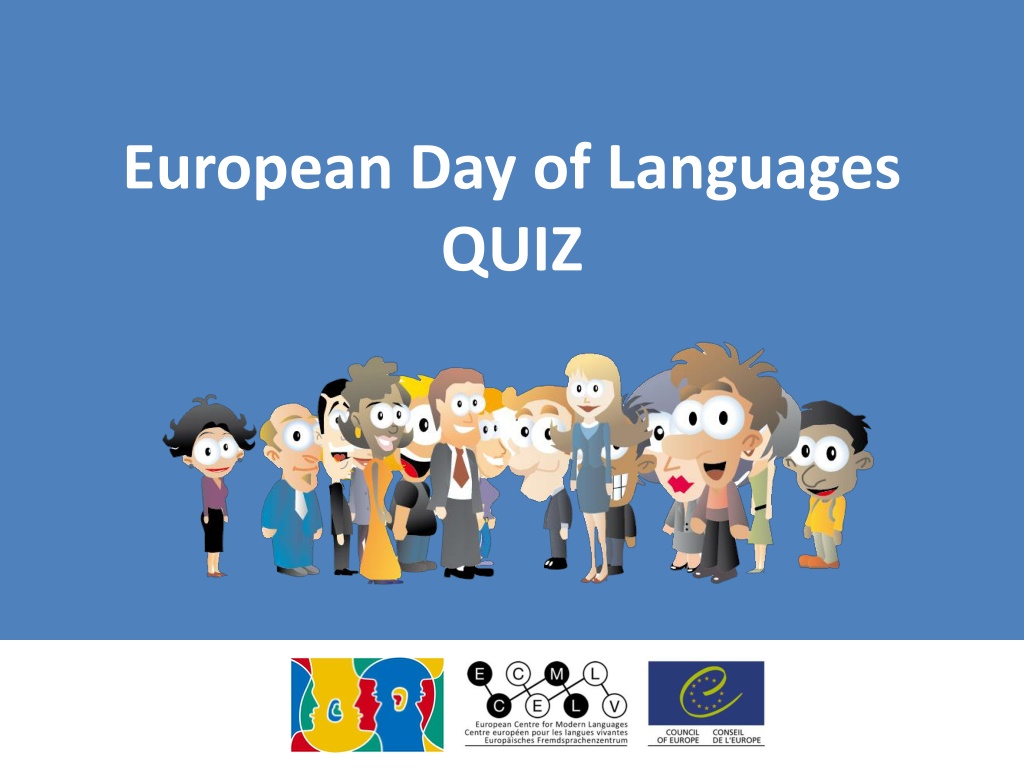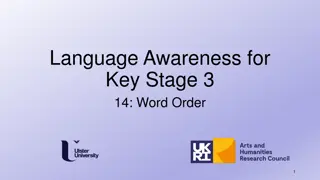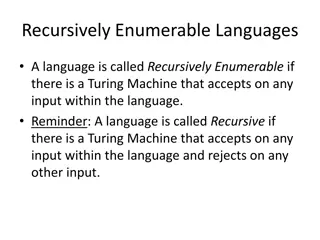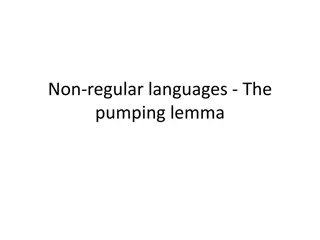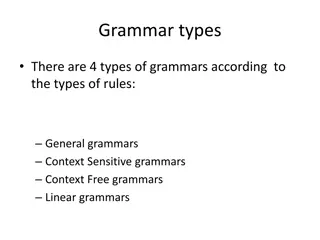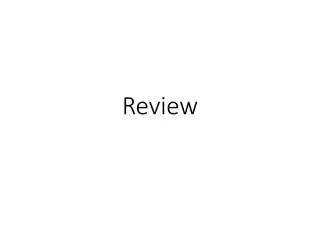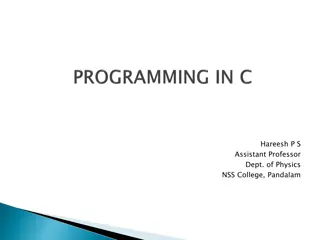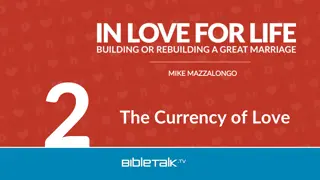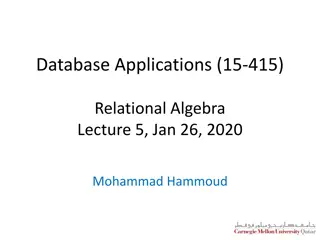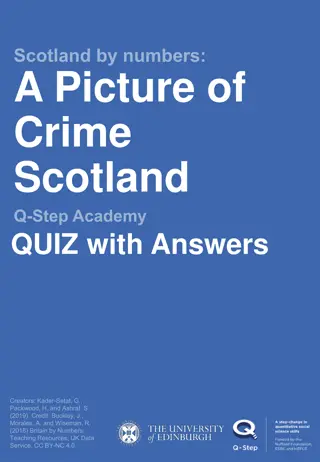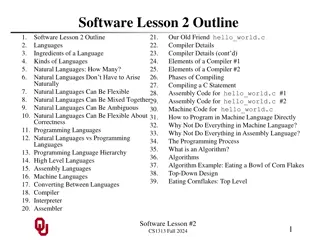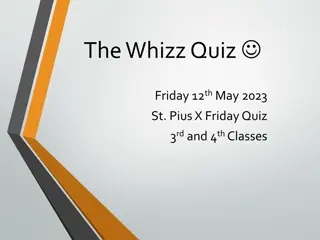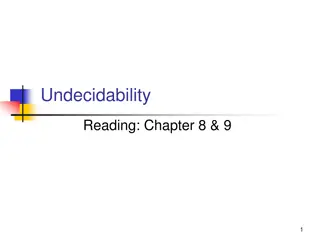European Day of Languages QUIZ
Explore interesting facts about languages in the world through a quiz. Discover the number of living languages, the origins of written language, official languages like Azeri, and the history of sign languages. Test your knowledge on the European Day of Languages!
Download Presentation

Please find below an Image/Link to download the presentation.
The content on the website is provided AS IS for your information and personal use only. It may not be sold, licensed, or shared on other websites without obtaining consent from the author.If you encounter any issues during the download, it is possible that the publisher has removed the file from their server.
You are allowed to download the files provided on this website for personal or commercial use, subject to the condition that they are used lawfully. All files are the property of their respective owners.
The content on the website is provided AS IS for your information and personal use only. It may not be sold, licensed, or shared on other websites without obtaining consent from the author.
E N D
Presentation Transcript
1. How many living languages are there estimated in the world today? a. Around 500 b. Around 2000 c. Around 6000 d. Around 3500
There are between 6000 and 7000 languages in the world - spoken by six billion people divided into 189 independent states.
2. What is generally considered to be the first form of written language? a. Cuneiform script b. Egyptian hieroglyphs c. Cyrillic alphabet d. Phoenician script
Cuneiform was used for over 3000 years throughout the Near East by such cultures as the Sumerians, Babylonians, Assyrians, and Hittites. Sumerian cuneiform
3. The official language of Azerbaijan is called? a. Azerbaijanian b. Azerbaijanic c. Azeri d. Azerban
The official language of Azerbaijan is called Azeri.
4. Where do sign languages come from? a. They have been copied from the great apes living in Africa. b. They were invented by the French Abb de l'Ep e between 1760 and 1789. c. They emerged naturally where deaf people were gathered together and are present also in some indigenous populations. d. They have been created in the language laboratory from the Gallaudet University (USA).
The Abb de l'Epe is the first person who recognized the importance of using a sign language for the instruction of deaf children and is credited to have brought together the deaf community in an institution that later became Institut Saint Jacques (which still exists in Paris).
5. In which country is the language Cymraeg spoken? a. In the Faroe Islands b. In Wales c. In Scotland d. In Ireland
Cymraeg (Welsh) is the name of the Celtic language spoken in Wales. Wales has two official languages, Welsh and English. Welsh is a Celtic language established in the 6th century and is closely related to Cornish and Breton and is one of Europe s oldest living languages. Welsh is currently spoken by over 20% of the population, approximately 720,000 people. Wales is called Cymru in Welsh.
6. Sign language is universal. - true or false? a. true b. false
False. There are many varieties and there can actually be more than one signed language in a country, just as for oral languages. For example, there are two sign languages in Belgium (French Belgian Sign Language and Flemish Sign Language) or in Spain (Spanish Sign Language and Catalan Sign Language). Also, there are different sign languages in countries that have the same spoken language, such as in the UK and Ireland. This is due to historical developments that are different to the ones experienced in spoken languages.
7. Which is the country with the highest number spoken on its territory? of languages a. Russia b. China c. Germany d. Norway
Russia (148 million inhabitants) has by far the highest number of languages spoken on its territory: from 130 to 200 depending on the criteria.
8. How many words does the active vocabulary of a person contain? a. 30.000 words b. 50.000 words c. 150.000 words d. 9.000 words
The words educated people use their active vocabulary can reach some 50,000 words; the words they know but do not use their passive vocabulary is somewhat larger. conversation, people often make use of a small number of words, but with great frequency. It has been estimated that a 21-year-old has already uttered some 50 million words. In everyday
9. Which affirmation is true? a. Romanian and Bulgarian are Romance languages. b. Danish and Faroese are Slavic languages. c. Hungarian and Estonian belong to the Uralic language family. d. Latvian and Lithuanian belong to the Baltic language family.
The families in Europe with the most member-languages speakers are the Germanic, Romance, and Slavic. and the most Germanic Icelandic, Bulgarian, Russian, Ukrainian, Belarusian, Polish, Sorbian, Czech and Romance languages are Romanian, Occitan, French and Sardinian. languages Swedish. are Danish, Slavic Norwegian, languages are
10. The tongue twister Fisker Frits fisker friske fisk is in: a. Norwegian b. Danish c. Icelandic d. Finnish
Its a tongue twister from Denmark! Compare Danish to German: Fischers Fritz fischt frische Fische Fisker Frits fisker friske fisk
11. Which of the following languages are written from right to left? a. Maltese b. Hebrew c. Arabic d. Japanese
Hebrew and Arabic are written from right to left. Japanese traditionally, is written from top to bottom (and then right to left). Maltese is written from left to right.
Thank you for participating! And the winner is
